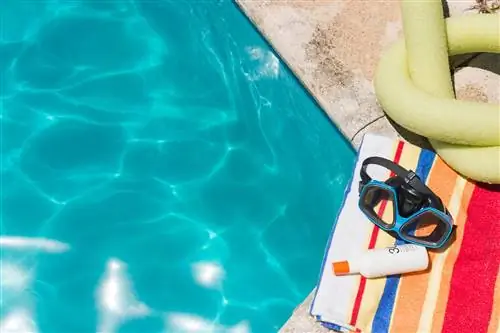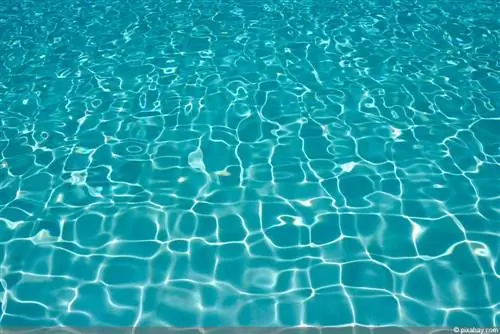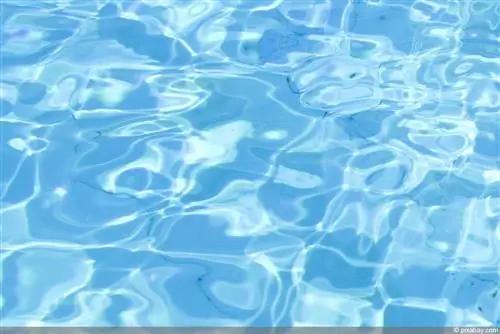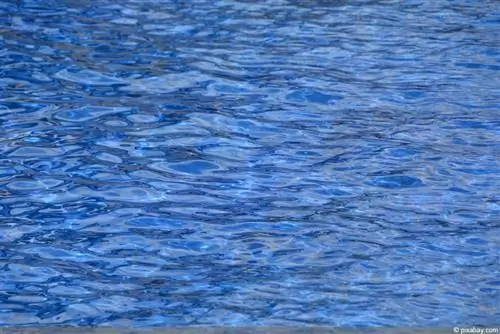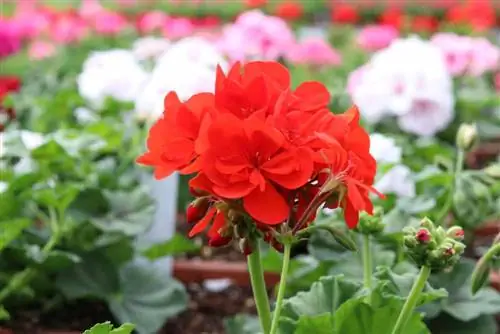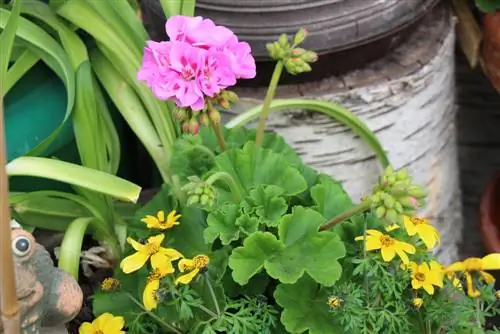- Author admin [email protected].
- Public 2023-12-17 03:39.
- Last modified 2025-01-24 12:45.
Chlorine is used to treat drinking water and disinfect pools. Chlorine is also used in the private sector, as it can be used to effectively and conveniently remove bacteria from swimming pools. But because of its highly toxic properties, the element is repeatedly the subject of critical discussions. Pool water can still be used for irrigation in the garden, provided certain aspects are taken into account.
Chlorine in nature
Chlorine is a chemical element whose anion occurs comparatively frequently in nature. This anion is also known as chloride and exists in s alt-containing compounds. Plants produce such organochlorine compounds in small quantities. Some of these are absorbed through the roots. The concentration of chloride in he althy plants is on average between two and 20 milligrams. If oversaturation occurs, poisoning can occur. Plants have different levels of sensitivity to chlorine content:
- chlorinetolerant: tulips, daffodils, roses, beetroot, rhubarb
- conditionally chlorine tolerant: tomatoes, kohlrabi, potatoes, cucumbers, spinach
- not chlorine tolerant: annuals, conifers, lettuce, berry bushes, fruit trees

Note:
Tropical plants in winter gardens and greenhouses do not tolerate water containing chlorine.
It depends on the salary
Pool water can certainly be used to water lawns or beds, as long as the chlorine content does not exceed a certain limit. If you want to use the water directly from your swimming pool, you should first determine the chlorine content. There are special test devices for this, but they are expensive.
Tip:
A rule of thumb is that it takes around 48 hours until the limit value of a recommended amount of disinfectant is fallen below. Chlorine breaks down completely in seven to ten days and can then be used for watering.
Legal regulations
In Germany there is an upper limit of 0.3 mg/l chlorine that may be contained in the water. This limit is set comparatively low and applies to both drinking water and useful water in the pool. If the chlorine content is below this value, the water is considered harmless and can be used in the garden without any problems. Water with a higher concentration of chlorine must be disposed of via the sewage system. There may be different regulations depending on the region, which you should inform yourself about beforehand.
Storage
You can temporarily store the water from the pool before using it for garden irrigation. Caution should be exercised when discharging water into a cistern. Rainwater collects here, allowing bacteria to settle within a short period of time. A self-cleaning system is created, which is damaged by the introduction of chlorine-containing water. Chlorine kills the bacteria and affects the functioning of the cistern. Therefore, direct the water into a rain barrel that is only used for pool water. After one to two weeks, the water should be free of chlorine compounds.
Which chlorine water is suitable
There are various ways to keep pool water free of bacteria. Each method works at different speeds. The times in which the chlorine in the water breaks down also vary accordingly. If you want to use the water from the swimming pool for watering, you should prefer a quick-acting method.
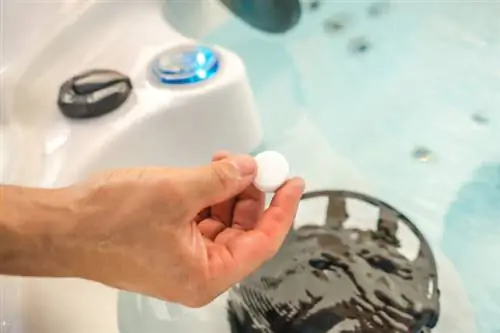
Chlorine tablets
The decomposition of the tabs occurs evenly and takes some time. Water movements speed up the process. Since the chlorine content cannot be precisely dosed with tablets, chlorine tablets are less suitable for small pools. It can quickly happen that the limit value is exceeded. If you want to use the pool water in the garden, you should avoid adding tablets for about eight days.
Chlorine granules
This loose form enables precise dosage so that the limit value can be adhered to exactly. Granules dissolve more quickly than tablets, so the chlorine in the water breaks down more quickly.
Liquid chlorine
Chlorine in liquid form enables precise dosage, similar to granules. As soon as it gets into the water, it shows its antibacterial effect without having to decompose first. Decomposition processes take place immediately, so the water is ready for reuse in the garden more quickly.
Shock chlorination
This name means that the water is treated with a very high concentration of chlorine. Shock chlorination is carried out when the water is heavily polluted. This method should not be carried out in private settings as it can cause damage to he alth. The water also damages the environment and should only be used in the garden after it has been stored for a long period of time.
Watering correctly
It sounds tempting to simply pull the plug out of the basin and let the water flow freely. But this method has some negative side effects that can quickly cause a lot of trouble:
- Neighboring properties may be flooded
- Danger of waterlogging in the substrate
- Slopes and compacted soils prevent seepage
- Water accumulation in the basement possible
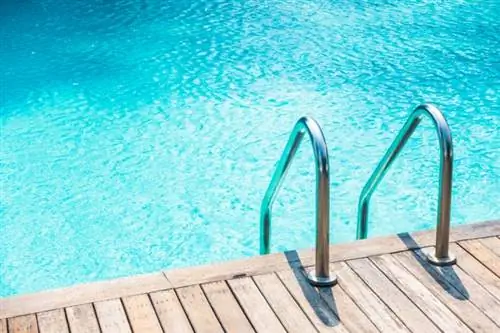
Basically, only as much pool water should be piped directly into the garden as the surface area can accommodate. The process may take several days. A submersible pump makes your work easier. Hang the device in the pool and place the hose on the free area. In this way, small amounts of water are continuously pumped out and distributed over the lawn. You can also use the water to water flower boxes and containers. A pool with stagnant water makes an excellent water reservoir where you can dip the watering can and extract water when necessary.
Tip:
Depending on the type of pool, you should never drain the water completely, because it primarily protects the foundation of free-standing steel wall pools from frost damage and gives it stability. You must empty plastic pools completely before winter.

